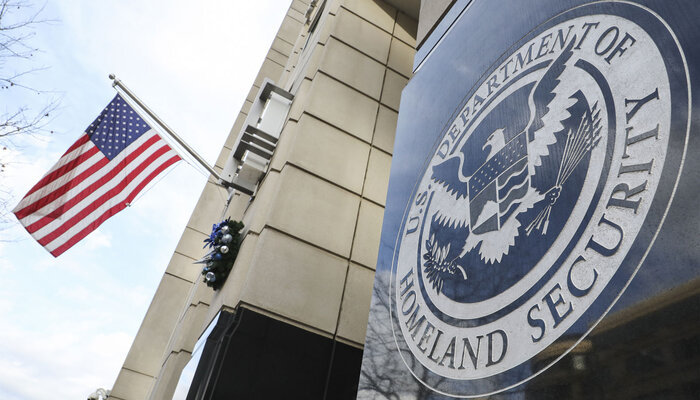This article was first published in The Hill.
Earlier this month, the House committee charged with overseeing the Department of Homeland Security launched an investigation into a newly disclosed DHS domestic intelligence program, citing “potential violations of Americans’ fundamental civil liberties.” Under the program, first revealed by Politico, the department’s Office of Intelligence and Analysis gathered information from detainees in U.S. prisons and jails without the detainees’ lawyers present. Parts of the program were paused after a number of DHS officials raised concerns about its legality, but the fact that this program even existed is deeply troubling — and is just the latest evidence that the department’s intelligence operations urgently need reform.
The program revealed by Politico is the latest of many abuses by the Office of Intelligence and Analysis, or I&A. I&A’s role is to collect, analyze, and disseminate information on threats to the country, and although it is permitted to collect only information that is publicly available (like social media posts) or through openly acknowledged conversations with human sources, its officers have repeatedly misused their authorities.
I&A’s social media surveillance often dwells on targets’ political views and is frequently of little legitimate value. Most infamously, during racial justice demonstrations in Portland, Ore., in 2020, I&A officers broadly monitored social media and accessed immigration, travel, and other, undisclosed databases to assemble dossiers on protestors to share with law enforcement. They also compiled intelligence reports on journalists covering the government response to the protests. Using a nakedly political proclamation issued by President Trump that depicted graffiti and vandalism as a threat to “domestic tranquility,” I&A claimed authority to surveil activists protesting confederate monuments. More recently, I&A has surveilled Americans discussing abortion online, and DHS promised a program to trawl the internet for dangerous “narratives and grievances.”
Too often, I&A puts protest and other forms of core political speech in the crosshairs of its intelligence officers. I&A generates and shares largely unsubstantiated — and, indeed, sometimes outright false — information with thousands of police departments nationwide that at times have taken DHS at its word and targeted people based on their political views.
The agency homes in on events — such as the public’s response to the Supreme Court’s Dobbs decision overturning Roe v. Wade — that it speculates have the potential for national security threats and then monitors Americans’ “reactions” and “reflections.” This dragnet approach sweeps up a huge volume of political information that ultimately drowns out whatever tiny amount of potentially relevant data is obtained, wasting valuable government resources and undermining civil rights, civil liberties, and privacy.
As my Brennan Center for Justice colleague Faiza Patel and I explain in a new report, these abuses persist thanks to permissive authorities and policies and inadequate safeguards.
Guidelines meant to ensure that I&A does not abuse its authorities or violate constitutional rights include broad exceptions in cases where a proposed action furthers one or more of I&A’s missions. But these missions are so expansive — covering terrorism, drug trafficking, threats to infrastructure, major disasters, and more — that they can easily serve as cover for a range of illegitimate government activities, as occurred during Portland. I&A claims to have extra safeguards in place to protect Americans’ information. But these too basically hinge on I&A’s assessment of whether it furthers its mission.
Internal oversight technically exists, but I&A leadership has worked to sideline DHS offices tasked with overseeing its impact on civil rights, civil liberties, and privacy, and at times has simply ignored legal counsel.
Safeguards for Americans’ constitutional rights are weak at best. The First Amendment gets only a passing treatment in the preamble to the guidelines that suggests I&A can monitor core political speech and activity so long as it asserts a mission purpose to do so. Under this framework it is all too easy for I&A officials to concoct a pretext for snooping, as we saw with the Trump administration’s targeting of racial justice protestors on the premise that they threatened national security. The guidelines also permit intelligence activities that target people on the basis of traits that the Constitution’s equal protection clause safeguards, such as race or gender, mixed with “other information,” which they fail to specify.
What is the path forward? Homeland Security Secretary Alejandro Mayorkas should permanently end interviews in environments like jails, where subjects are not in a strong position to assert their own rights. But there’s much more to be done. He should also end I&A’s easily abused practice of disseminating intelligence derived from Americans’ social media.
The secretary should also establish an intelligence oversight office that is genuinely independent and put policies in place to increase transparency and accountability. And Congress must act to focus I&A’s sprawling missions and narrow the discretion it so often abuses.
Conducting domestic intelligence is inherently a fraught undertaking. But I&A’s very design, with its all-encompassing mandates, overbroad discretion, and weak safeguards, virtually guarantees abuses. That’s unacceptable at an agency whose operations touch on the lives of millions of Americans. Two decades since the Department of Homeland Security opened its doors, immediate fundamental changes are needed to ensure that this overreach does not continue for another 20 years.



